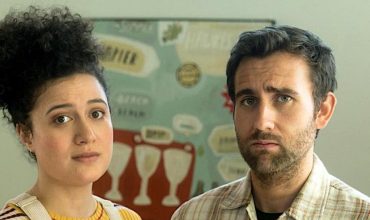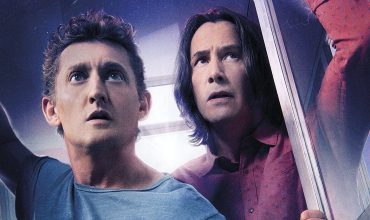The Brothers Gibb who became the musical trio the Bee Gees, were born after the Second World War; Barry in 1946, and the twins Robin and Maurice in 1949. They were part of that first wave of Baby Boomers. Their career was a glittering example of the kind of fame and money that the music business could bring young performers in the 1960s and 1970s. They had nine Number 1 singles in the US. They won five Grammy awards for the SATURDAY NIGHT FEVER soundtrack album. They sold 120 million records. Only the Beatles and the Supremes sold more. They were superstars whose career suffered major setbacks. This is all documented in detail in a new feature documentary directed by Frank Marshall.
How well you know the Bee Gees and what you think of them will depend on how old you are and where you come from. In Australia, we like to remind the world that this country was an important part of their early success. The Gibb family emigrated from England in 1958. They were “10 Pound Poms” like a number of other migrants who later did well in the Aussie music business (John Farnham, Jimmy Barnes. John Paul Young, Jon English and the Easybeats.) The Gibbs learned their craft as teens in Brisbane. They played on radio and television; gigged incessantly and recorded their first two albums. In interview, they speak about having the determination to become famous musicians even in their early teens. After the Beatles toured Australia in 1964, the Gibbs decided that returning to England was the way to get recognised.
In 1967, they launched themselves on Britain and within a remarkably short time, were charting. Impresario Robert Stigwood was impressed with the Bee Gees Australian material and became their manager. “New York Mining Disaster 1941” and “Massachusetts” became UK and US hits within months. This success set the group on a busy schedule of touring and recording for the next three years. During this time, they grew their fan base and were financially very successful. In a later interview, Maurice reports that he had six Rolls Royces before he was 21.
The tightness of the Bee Gees as a group was part of their strength, growing up. This was tested greatly after they became internationally known. The struggles behind the scenes are noted but not investigated in great detail. We understand that Robin and Barry vied for the status of lead singer and that Maurice was the peacemaker. Generally, these disputes are a sideline to the documentary’s main story which is mostly about the business and the creativity of being a Gibb. Youngest brother Andy (born in 1958), was supported by his older brothers and encouraged to develop as an act in Australia first, which he did for two years. When he eventually got to America, where his brothers now were, he was in competition with them on the charts. The bigger picture was that he was singing songs the older brothers wrote and taking career guidance from them. Andy was a teen idol, while the older Gibbs had a broader audience.
The film gives us a view into the heights of 1970s fame especially as it documents the events surrounding the composing and recording of the Saturday Night Fever soundtrack album. This part of the tale is fascinating for any of us who have fond ideas that creativity and big money can’t mix. Saturday Night Fever the movie and album was built, piece-by-piece by film and music professionals. Its starting point was an article written by rock journalist Nik Cohn for New York Magazine. The story investigated the way straight, white suburbanites were embracing the dance culture that had originated from both black and gay clubs. The movie embodied that idea in television actor John Travolta and the whole concoction became a massive, money-making enterprise that took the Bee Gees, Travolta and dance music to another level. Suddenly everyone wanted a piece of the disco bonanza; as far as America was concerned, the shiny, harmonising, falsetto-singing image of the Gibbs became the corporate face of disco. When the “Death to Disco” cultural backlash occurred, the Bee Gees were directly in the firing line. The consequences of this are shown with an excellent sequence drawn from television footage.
This is a well-researched documentary and utilises impressive archival resources. The focus of the film skews towards a North American perspective which is where the group had their biggest success. But it also means that Australian audiences might find our local connection insufficiently mapped. Similarly, there is no sign of the British attitude towards the Bee Gees in evidence, such as the sketch that TV presenter Kenny Everett did about a D-I-Y Bee Gees Kit. Nor is there any material from the three comedians who formed the parody group “The Hee Bee Gee Bees” who successfully released a couple of albums in the UK and Australia.
Frank Marshall is the director of such films as ARACHNOPHOBIA (1990) and CONGO (1995), however even if you don’t know his name, you absolutely know some of the many films he has produced. A sample: EMPIRE OF THE SUN (1987), WHO FRAMED ROGER RABBIT (1988), THE SIXTH SENSE (1999), THE BOURNE IDENITY (2002), ASSASSIN’S CREED (2016) and JURASSIC WORLD (2018). He is the Marshall of the prolific Kennedy/Marshall film company and he is a man who certainly understands fame and power and appreciates the details of the Bee Gees’ journey through the highest levels of show business. The well-credentialed Mark Monroe has written numerous feature documentaries such as THE COVE (2009) and THE BEATLES: EIGHT DAYS A WEEK and he manages to reveal how the Gibbs rode the rollercoaster of success and the costs of doing so.
THE BEE GEES: HOW DO YOU MEND A BROKEN HEART is a comprehensive piece of work. It uses interview footage from the 1990s to cover the late Maurice and Robin’s thoughts. It has 2019 footage of Barry Gibb looking back at it all. Although it doesn’t dig deep into the psychology or emotions of the family, this documentary is, by its closing moments, a moving tribute to three talented boys who wanted to be famous for their music and eventually wrote more than 1000 songs. Duration: 1 hour and 51 minutes (8/10)


